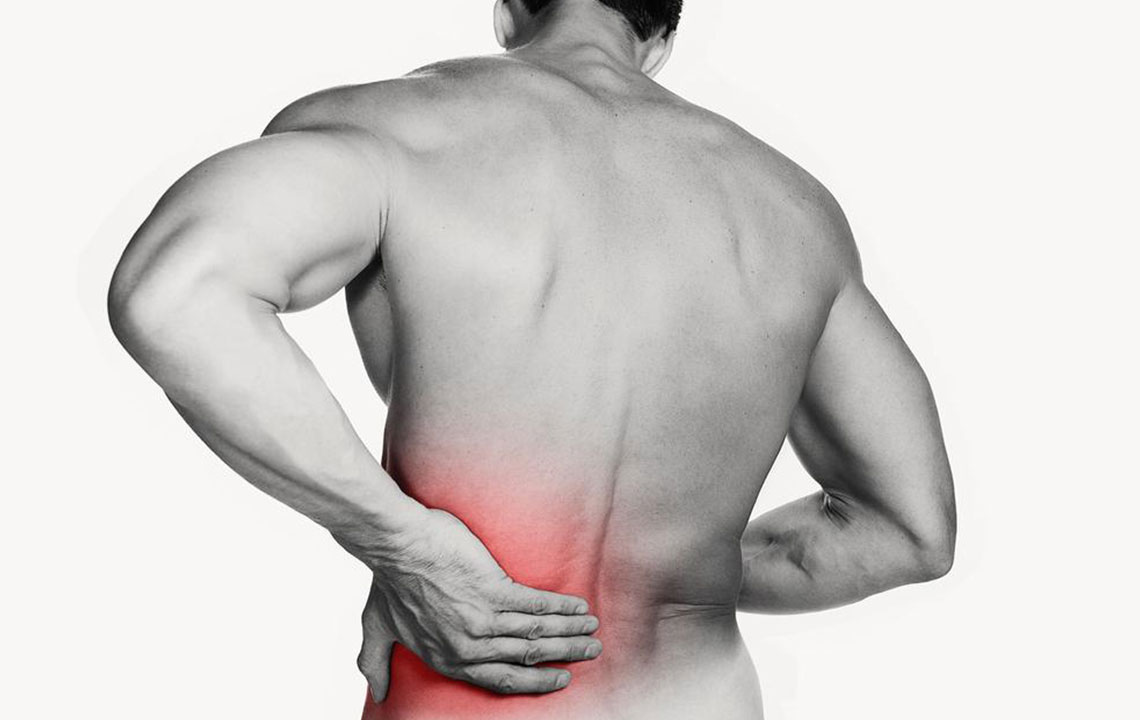Symptoms, Causes and Treatments for Lower Back and Hip Pain
One of the most common ailment and pain felt by humans is the lower back and hip pain. The lower back starts at the end of the rib cage and follows down until above your bottom. This region is called the lumbar region and comprises of vertebrae numbered L1 to L5. Lower back and hip pain can cure on its own but still needs care.
The pain may start as a dull ache but can move on to a stabbing one immediately.

There are other warning signs you should be vigilant about. A loss of bowel or bladder control is a sign of lower back and hip pain. Weakness in the leg accompanied by fever isn’t a good omen either. Sometimes you may feel lower back and hip pain while coughing or urinating.
Strains and Sprains
A lower back and hip pain can be of two categories; muscle strain and ligament injury. Chances of a muscle strain increase when stretched beyond capacity, and in some cases, even cause the muscle to tear.
Sprains occur when the ligaments that connect the bones are out-stretched. The ligament often ruptures due to this wear and tear.
Causes of Lower Back Hip Pain
As stated earlier, lower back hip pain heals on its own. But if the pain persists for more than 72 hours, you need treatment. If the pain persists for three months or more, it becomes a chronic lower back pain.
- Lumbar Herniated Disc
The lumbar discs contain a jelly-like substance within. Sometimes it can ooze out to the tough outer layer and irritate the adjacent nerves. When the herniated part reaches the nerve roots, it triggers pain. The nerve root inflammation along with the compression of the nerves aggravate the pain. The disc wall gets an added supply of nerve fibers that tears out of the wall, which enhances the pain further. - Degenerative Disc Disease
The inter-vertebral discs are saturated with water and healthiest at birth. The discs lose their hydration with age, reducing the resistance of the discs over time. This transfers the pressure onto the disc walls, leading to the breakage of the disc wall and herniation. It can further lead to stenosis. These symptoms lead to a lower back and hip pain. - Facet Joint Dysfunction
Each disc in the lumbar spine has a motion segment attached to two facet joints. These joints have cartilages infested with nerves and capsular ligament. Any injury here can induce lower back hip pain. - Sacroiliac Joint Dysfunction
The sacroiliac joint conjoins the lower sacrum to either pelvis. It absorbs all kinds of shock that the pelvis receives and releases the tensions felt into the upper and lower body. Inflammation of this joint causes sacroiliitis, which is a form of lower back and hip pain. - Spinal Stenosis
Spinal stenosis occurs when the nerves in the spine compress or narrow down. This emanates inflammation in the nerve roots causing immense pain. The narrowing can be central, forward, single or multi-layered. It is a common cause of lower back and hip pain.
Lower Back And Hip Pain in Women
Lower back and hip pain are more common in women than men. Women often complain of hip pain near the thighs, hip joint or the groin. Make sure to understand all the underlying causes to help cure this hip pain.
- Osteoarthritis
The most common culprit of lower back hip pain in women is osteoarthritis and occurs when the ball and socket joint in the hips starts to wear out. This can lead to an excruciating pain in the thighs and groins due to swelling in the joint. - Hip Fracture Due to Osteoporosis
Osteoporosis reduces the bone density, making your hip bones more vulnerable to fracture. This is common more amongst older women than men. With this condition, you may have difficulty standing for extended periods and lifting or straightening the leg. The toes of the affected side appear turned out as a result of the fracture. - Tendinitis
Tendons connect muscles to the bones, and hip joints are no exception. Women athletes face a problem called iliotibial band syndrome, which is a leading cause of tendinitis. The tissues that run from the pelvis to the knee form this band. Any strenuous physical activity like running can rupture this band. This leads to lower back and hip pain in women.
Treating Lower Back Hip Pain
Here are some ways that can eliminate lower back and hip pain.
- Heating pads and belts give temporary relief for short-term pains.
- Don’t rest your back too much. This can lead to a loss of flexibility.
- Yoga and stretching exercises are helpful in cases of lower back and hip pain.
- A massage therapy accompanied by stretching and exercise is fruitful too.
Lower back and hip pain affect a vast majority of the world population. But it can be treated in several ways. Make sure that you consult with a doctor if the symptoms of pain are persistent.


